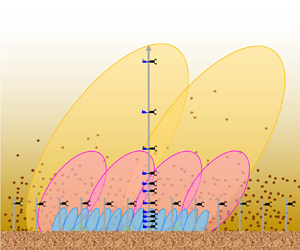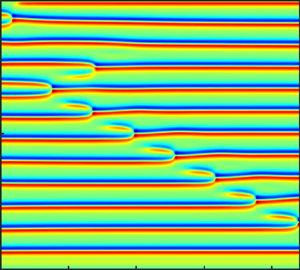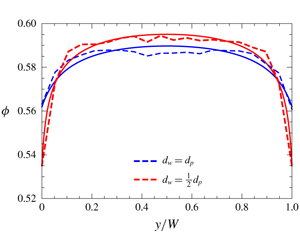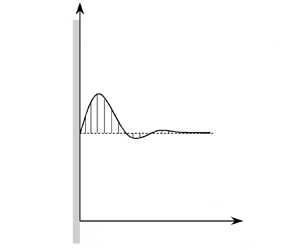Most cited
This page lists all time most cited articles for this title. Please use the publication date filters on the left if you would like to restrict this list to recently published content, for example to articles published in the last three years. The number of times each article was cited is displayed to the right of its title and can be clicked to access a list of all titles this article has been cited by.
- Cited by 3
On Rayleigh's investigation of crispations of fluid resting on a vibrating support
-
- Published online by Cambridge University Press:
- 26 April 2006, pp. 645-648
-
- Article
- Export citation
- Cited by 3
Instability of the attachment line boundary layer in a supersonic swept flow
-
- Published online by Cambridge University Press:
- 23 December 2021, A26
-
- Article
- Export citation
- Cited by 3
Reflections on dissipation associated with thermal convection – CORRIGENDUM
-
- Published online by Cambridge University Press:
- 27 June 2014, pp. 749-751
-
- Article
-
- You have access
- Export citation
- Cited by 3
Combustion Physics. By K. Law Chung. Cambridge University Press, 2006. 738 pp. ISBN 0521 870526. £55.
-
- Published online by Cambridge University Press:
- 24 September 2007, pp. 474-475
-
- Article
- Export citation
- Cited by 3
On the flow of certain orientable fluids between two co-axial cones
-
- Published online by Cambridge University Press:
- 28 March 2006, pp. 511-520
-
- Article
- Export citation
- Cited by 3
Formation of columnar baroclinic vortices in thermally stratified nonlinear spin-up
-
- Published online by Cambridge University Press:
- 29 May 2012, pp. 265-285
-
- Article
- Export citation
- Cited by 3
Radial pulsations of a fluid sphere in a sound wave
-
- Published online by Cambridge University Press:
- 22 June 2001, pp. 407-410
-
- Article
- Export citation
- Cited by 3
Energy constraints in forced recirculating MHD flows
-
- Published online by Cambridge University Press:
- 25 November 1998, pp. 319-343
-
- Article
- Export citation
- Cited by 3
The forces on wing-fuselage combinations in supersonic flow
-
- Published online by Cambridge University Press:
- 28 March 2006, pp. 210-226
-
- Article
- Export citation
- Cited by 3
Turbulent entrainment into inert and reacting multiphase plumes
-
- Published online by Cambridge University Press:
- 15 July 2011, pp. 577-589
-
- Article
- Export citation
- Cited by 3
Parametric subharmonic instability in a narrow-band wave spectrum
-
- Published online by Cambridge University Press:
- 18 February 2019, pp. 247-280
-
- Article
- Export citation
- Cited by 3
Surface-layer similarity in turbulent circular Couette flow
-
- Published online by Cambridge University Press:
- 20 April 2006, pp. 123-131
-
- Article
- Export citation
- Cited by 3
Scaling law of the second-order structure function over the entire sandstorm process
-
- Published online by Cambridge University Press:
- 08 January 2024, A29
-
- Article
- Export citation
- Cited by 3
On upstream influence in supersonic flows
-
- Published online by Cambridge University Press:
- 05 September 2005, pp. 167-178
-
- Article
- Export citation
- Cited by 3
Adaptive stochastic trajectory modelling in the chaotic advection regime
-
- Published online by Cambridge University Press:
- 13 March 2015, pp. 1-25
-
- Article
- Export citation
- Cited by 3
The flow within the head of a gravity current
-
- Published online by Cambridge University Press:
- 17 October 2024, A42
-
- Article
-
- You have access
- Open access
- HTML
- Export citation
- Cited by 3
Nonlinear interaction between a boundary layer and a liquid film
-
- Published online by Cambridge University Press:
- 07 October 2009, pp. 199-242
-
- Article
- Export citation
- Cited by 3
Secondary instabilities in Taylor–Couette flow of shear-thinning fluids
-
- Published online by Cambridge University Press:
- 17 December 2021, A4
-
- Article
- Export citation
- Cited by 3
On modelling shear layers in dense granular flows
-
- Published online by Cambridge University Press:
- 31 March 2020, F1
-
- Article
-
- You have access
- HTML
- Export citation
- Cited by 3
Finite-amplitude instability of the buoyancy boundary layer in a thermally stratified medium
-
- Published online by Cambridge University Press:
- 30 August 2022, A40
-
- Article
-
- You have access
- HTML
- Export citation
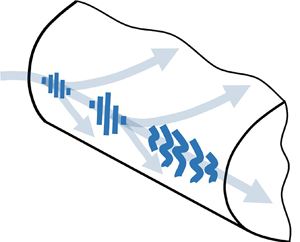






 tend to inhibit the instability, while larger ones,
tend to inhibit the instability, while larger ones,  , have the opposite effect. The main source of instability is the baroclinic vorticity production and not the presence of a solid sidewall since, counter-intuitively, the flow is more unstable for a free-slip boundary than for a no-slip one. Finally the effect of the temperature boundary conditions (isothermal versus adiabatic) on the horizontal boundaries has been investigated. The adiabatic boundaries help to preserve for longer times the sloping density interfaces that feed, with their potential energy, the baroclinic vorticity production; this results in more unstable flows.
, have the opposite effect. The main source of instability is the baroclinic vorticity production and not the presence of a solid sidewall since, counter-intuitively, the flow is more unstable for a free-slip boundary than for a no-slip one. Finally the effect of the temperature boundary conditions (isothermal versus adiabatic) on the horizontal boundaries has been investigated. The adiabatic boundaries help to preserve for longer times the sloping density interfaces that feed, with their potential energy, the baroclinic vorticity production; this results in more unstable flows.







